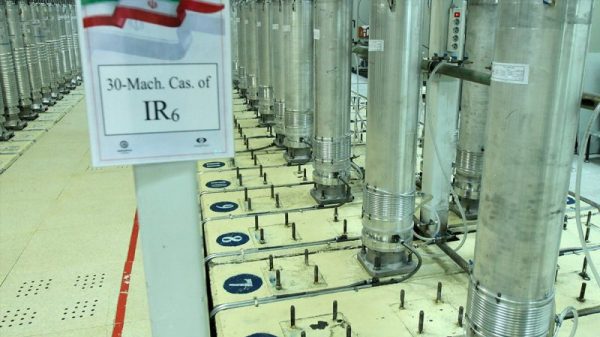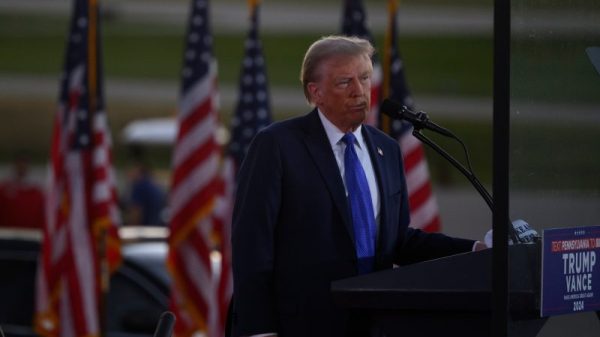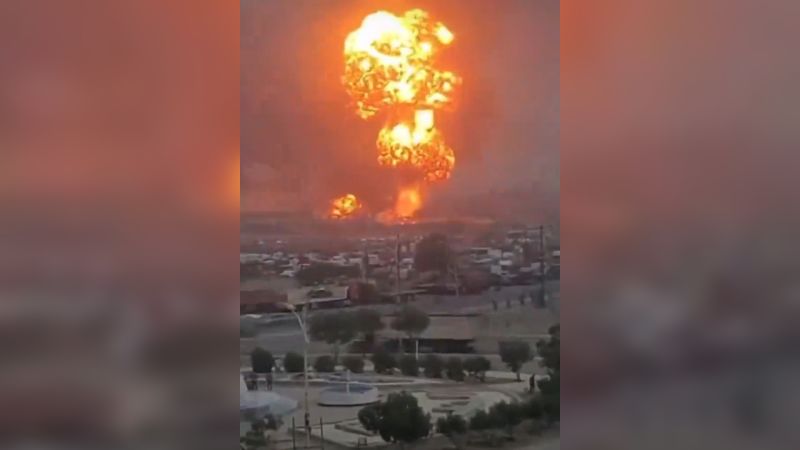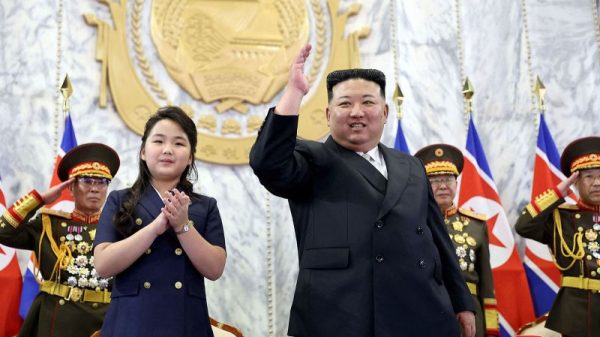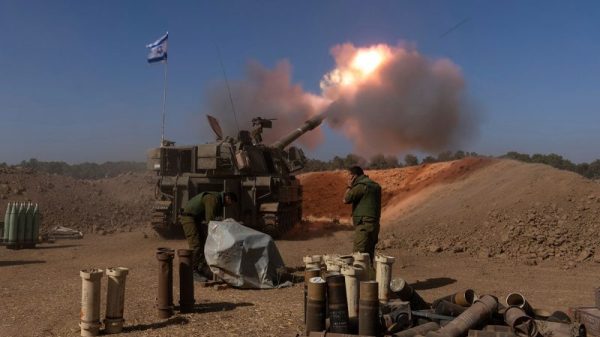Aboard an aging Boeing 707, thousands of feet above the Red Sea, I don a set of high-tech 3D goggles and stare at the small TV monitor recessed in a bank of retro dials and switches.
Saudi Arabia’s amber desert slides by to my right, Egypt’s coast to my left, then a monstrous F35 fighter jet fills the tiny screen.
I am with the Israel Defense Forces (IDF) – the first foreign journalist to be taken on a combat mission more than a thousand miles from Israel aboard a fighter jet refuel tanker.
Israel has been engaged in an escalating war since Hamas’ October 7 attack last year – not just in Gaza, but in Lebanon with Hezbollah, which began attacking Israel October 8; in Yemen with the Houthis, who have launched long-range attacks at Israel’s main population centers; even in the Syrian and Iranian capitals.
Israel’s response to those attacks have killed nearly 42,000 in Gaza and more than 1,000 in Lebanon. Deadly bombing campaigns in Yemen have destroyed critical infrastructure in a war-torn country that has for years been one of the worst humanitarian cases in the world.
Israel’s invitation to join this mission came with no detail about the plane’s destination. As I climb the plane’s rickety steps, I have no idea where I am going or what this IDF flight will reveal about military operations.
Israeli Air Force security regulations are so tight neither I nor Lt. Col. Nadav Shoshani, the IDF spokesman accompanying me, are allowed to bring our cellphones aboard. Neither am I allowed to bring a camera or photojournalist.
Except for the cockpit, I have access to the more than 50-year-old former commercial airliner, and its commanders, under the condition that they not be named.
Even without a camera, this access is the only up-close opportunity to scrutinize and speak with those on the front lines of Israel’s several-front war.
In its new guise as an Israeli tanker, signs remain of the aircraft’s past life, a reminder of its age. The overhead call buttons depict a woman – sexism long since banished from our skies.
In all other ways, the aircraft is unrecognizable from its heyday carrying fare-paying passengers. The seats are stripped out, its long body fitted with huge, pressurized fuel tanks, essential for Israel to project its firepower.
Flying 1,200 miles (1,500 kilometers), the refueling mission I discover I am joining is the IDF’s longest-range combat mission since a 1985 raid on Tunis.
Shoshani reminds me of Prime Minister Benjamin Netanyahu’s words to the United Nations General Assembly the day before. “There is no place … that the long arm of Israel cannot reach,” Netanyahu said, referring to Iran and the wider Middle East.
For more than an hour and half, Israeli F35 fighter jets, each worth more than $100 million, close in behind the 707 tanker, nudging toward its trailing fuel pipe.
The squadron commander, a 15-year refueling veteran, stares through his 3D goggles, merging two camera images. He jockeys the two long levers beside his seat and steers the nozzle toward the gas-hungry fighter jet’s fuel port.
No part of this is easy, he tells me. The biggest challenge, he says, is making sure they load enough fuel, and timing the mission to the minute, so the F35s arrive on target with a full tank at precisely the moment their intelligence tells them it’s the best time to attack.
When he shows me a map of the mission, I realize we are on the way to Hodeidah Port in Yemen, controlled by Houthi rebels, backed by Iran.
Shoshani tells me the reason for this mission, is that over the past two weeks the Houthis have fired three long-range missiles, all intercepted near Tel Aviv.
Starting with attacks on shipping in the Red Sea, the Houthis say they are acting out of solidarity with Palestinians in Gaza. Their flag bears the phrases: “Death to Israel, A Curse Upon the Jews.” But experts say the popular fight in the name of Gaza’s Palestinians has also helped the group build support in Yemen and gain international acclaim.
The Houthis claim that their most recent attack, launched late Saturday, targeted Netanyahu as he arrived back from New York at Ben Gurion International Airport just outside Tel Aviv.
An impact in this area could have caused huge civilian casualties and is the reason why, 16 hours later, this mission was deployed.
As the last of the F35s decouple from the fuel feed, the squadron commander visibly eases in his seat, pushes back his goggles, and stretches his shoulders. Each jet is on the nozzle for about 3 minutes, requiring intense focus.
We begin circling, waiting for fighter pilots to deliver their payloads. Any attack from the ground could cost them vital fuel as they try to evade being shot down and require a refill to get back to base.
Twenty minutes later we’re headed north, no top-ups needed.
I ask the lead pilot on the tanker, a reservist veteran aviator, about the challenges of such a mission and his feelings when civilians are killed. We don’t want to kill civilians, he tells me, and we use all the intelligence we have to avoid it.
I point to the high death tolls in Gaza and Lebanon from Air Force strikes. We are targeting the Houthis, he tells me, they are firing missiles at our civilians, endangering them.
By the time we land, safely back in southern Israel, news of the strike is out. The Houthi TV channel is showing images of huge plumes of fire and smoke from Hodeidah Port.
The IDF says they targeted “power plants and a seaport in the areas of Ras Issa and Hodeidah,” adding the Houthis use the port to “transfer Iranian weapons to the region, and supplies for military needs, and thus also oil.”
According to Houthi officials, the F35s I saw being refueled struck a power station and fuel store in Hodeidah, killing a port official and three engineers.
IDF Chief of Staff Lt. Gen. Herzi Halevi released a statement after the strike: “We know how to reach very far, we know how to reach even farther, and we know how to strike there with precision.”
“This is not a message; it is an action. An action that carries a message with it,” Halevi said.
On the flight, Shoshani told me the message was for Iran too, a warning that while Israel is bracing for retaliatory strikes from Hezbollah in Lebanon, they want the group’s sponsor, Iran, to stay out of the fight.
This embed wasn’t just an object lesson in the lengths Israel will go to to punish its enemies, but real-time evidence that dormant adversaries are emerging from the shadows, and Israel’s war to thwart them is becoming regional.













